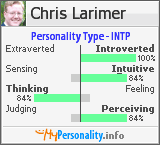I just posted the following at John Shuck's blog. No claims to originality - most of this was culled from various readings and some outright copied from Ben Witherington.
A couple of things:
1) Craig Evans has written a recent (2003) article on Jewish burial traditions, focusing on how they illuminate the Gospel narratives. You can find it in a PDF file here.
By following his footnotes, you can find a wealth of information. Take a look at the Anchor Bible Dictionary or the Encyclopedia Judaica (you can read the old article on burial here). You'll find that the Gospels reflect intimate acquaintance with these traditions.
You'll also discover that the tomb of the family of Jesus would not be in Jerusalem. It would be somewhere in Galilee or Bethlehem (either the one in Galilee/Zebulun or the one in Judea/Judah).
2. The tomb was discovered in a suburb of Jerusalem back in 1980 by arcaheologists of the Israeli Antiquities Authority (though outside of the Jerusalem of ancient times, as all burials had to be done outside the city). Amos Kloner and Joe Zias, two of the original archaeologists involved in the project, have openly repudiated the findings of the show in strong terms, both on television and in the public forum.
Let's face it - if Jews could prove that they had the body of the man Christians say was resurrected (and Muslims say ascended without death), why would they sit on it for twenty years?
3) It does seem to date from before the second century, and it is a very nice tomb belonging to a middle-class (or better) family. It was decorated from the outside and on the inside with a strange rosette shape, indicating the attention was to be drawn to it rather than being a secret.
Do we believe that Jesus' family was well-to-do? Do we believe that anyone associated with Jesus and his family closely enough would want to draw attention to his burial place? It could hardly be argued that any of his disciples would want to do so.
4) The names are a big problem for those who believe it's the biblical Jesus. Some names are in Hebrew, others in Aramaic, and the one of Mariamne is in Greek! That suggests it's a multi-generational tomb (rather than everyone being piled in there at roughly the same time).
5) History of the names - Richard Bauckham provides the following statistics. Out of a total number of 2625 males, these are the figures for the ten most popular male names among Palestinian Jews. the first figure is the total number of occurrences (from this number, with 2625 as the total for all names, you could calculate percentages), while the second is the number of occurrences specifically on ossuraies.
1 Simon/Simeon 243 59
2 Joseph 218 45
3 Eleazar 166 29
4 Judah 164 44
5 John/Yohanan 122 25
6 Jesus 99 22
7 Hananiah 82 18
8 Jonathan 71 14
9 Matthew 62 17
10 Manaen/Menahem 42 4
No mention is made in the documentary of the fact that though we only have a few hundred ossuaries with inscribed names, there is in fact another ossuary with the inscription 'Jesus son of Joseph'. Apparently this was not a rare combination of names at all.
For women, we have a total of 328 occurrences (women's names are much less often recorded than men's), and figures for the 4 most popular names are thus:
Mary/Mariamne 70 42
Salome 58 41
Shelamzion 24 19
Martha 20 17
At one juncture we are told that the name Mariamenon is found in Hippolytus a second century church historian. Two problems with this. Firstly so far as I can see, that name never occurs in the works of Hippolytus [I'm using the Lightfoot The Apostolic Fathers vol. i, part ii (London, 1889-1890)]. Secondly, Hippolytus died in about A.D. 236. He comes to us from the end of the second century A.D. He could never have known any eywitnesses or even second-third generation followers of Jesus. Even if he did mention the name in question (the one on the ossuary found at Talpiot), he provides no early second century evidence for this name, much less for the theory that this name is one way of referring to Mary Magdalene.
In fact the Acts of Philip, at best a fourth century document is the basis of the theory of Prof. Bovon that Mariamenou Mara= Mary Magdalene, but nowhere in that document are the two equated. The woman referred to in that document is an evangelist in Greek who is the sister of Philip (whether Philip the apostle or the later Philip the evangelist found in Acts 8, is up for debate).
In sum, there is a reason that every Biblical archaeologist, save possibly one, interviewed either in the Discovery Channel special or in the hour long debate thereafter repudiates or is unpersuaded by the findings of the show.
It's not the tomb of the biblical Jesus of Nazareth.
If you want to find his body, you'll see it come together (usually on Sunday mornings) to be fed on the Word and then sent out into the world.
Or you can ask John Dominic Crossan to point to some fossilized dog turd to find the remains of a Jewish rabble-rouser that people falsely called God.
Subscribe to:
Post Comments (Atom)






No comments:
Post a Comment